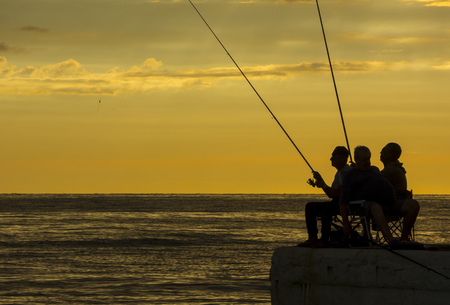1. Underestimating the Importance of Swim Selection
When it comes to targeting barbel in the UK, one of the most common blunders among anglers—especially those new to our rivers—is neglecting the significance of choosing the right swim. The term swim is widely used across Britain to describe a prime fishing spot along the riverbank, and its far more than just a patch of water. Too often, enthusiasm for shiny new tackle overshadows the art of reading the river itself. Instead of focusing solely on kit, savvy locals pay close attention to classic features such as gravel runs, undercut banks, snags, and sections where the current brings extra oxygen—prime real estate for hungry barbel. By failing to assess these natural indicators, you risk missing out on some of the best action British rivers have to offer. So before you cast in, take a leisurely stroll along the bank and let the landscape guide your decision; its a quintessential part of the UK angling experience.
Using Inappropriate Bait and Feeders
One of the most common pitfalls when targeting barbel in UK waters is overlooking the importance of selecting the right bait and feeder combination. Relying on generic baits, such as standard maggots or sweetcorn, might work for other coarse fish, but barbel often demand a more tailored approach. Overdoing it with groundbaiting—throwing in excessive amounts of bait—can also do more harm than good, clouding up the swim and potentially pushing wary fish away.
Best Bait Choices for UK Barbel
| Bait Type | Why It Works |
|---|---|
| Luncheon Meat | Oily, highly visible, and irresistible scent trail in flowing water |
| Pellets (halibut or fishmeal) | High protein content matches natural barbel diet and holds well in feeders |
| Boilies (meaty or spicy flavours) | Durable on hook and selectively targets larger specimens |
Avoid Over-baiting Your Swim
While it might be tempting to bombard your chosen spot with groundbait, UK rivers typically benefit from a more restrained and thoughtful approach. Too much loose feed can scatter the fish or fill them up before theyve even found your hook bait. Instead, aim for little and often—small handfuls or measured feeder loads throughout your session will keep barbel interested without overwhelming them.
Selecting the Right Feeder for Flow Conditions
The structure and pace of British rivers can vary dramatically, so matching your feeder to the swim is essential. On fast-flowing stretches like the River Trent or Wye, opt for heavier cage or open-end feeders to anchor your bait effectively. In steadier water or behind features like snags or bends, lighter feeders will suffice and allow for a subtler presentation. Remember, sensitivity and adaptability are key to coaxing barbel into feeding confidently.

3. Ignoring Local Tackle Tactics
If you’re aiming to land a quality barbel on British rivers, overlooking the tackle preferences of experienced UK anglers is a classic pitfall. Failing to adapt your setup to local conditions can often mean returning home empty-handed. British rivers are renowned for their varying flow rates, underwater snags, and crafty fish—meaning one-size-fits-all gear simply doesn’t cut it here.
Seasoned local anglers swear by sturdy rods that can cope with the powerful runs of a barbel, especially in rivers like the Trent or Severn where currents are strong. Equally important is your choice of hooklength; opt for abrasion-resistant materials that can stand up to gravel beds and weed growth, as lighter alternatives may easily snap or fray. When it comes to leads, don’t underestimate the river’s pull: use weights that will anchor your rig firmly even in swift water, but aren’t so heavy they spook wary barbel.
Adapting your tackle isn’t just about catching more fish—it’s also part of the authentic British coarse fishing experience. Ask fellow anglers at the bank for their advice or pop into a local tackle shop; you’ll quickly pick up tips specific to each stretch of river. Remember, blending local knowledge with robust gear is the key to avoiding blank sessions and enjoying proper barbel sport in true UK style.
4. Neglecting Watercraft and Bankside Etiquette
British barbel fishing is as much about respecting the river as catching fish. One of the most common mistakes newcomers make is overlooking watercraft and bankside etiquette, which are deeply rooted in UK angling tradition. Proper watercraft involves understanding how your presence affects the river environment and the barbel themselves. Stealth is crucial—heavy footfalls, dropped gear, or loud conversations can easily spook wary fish, especially on pressured venues.
The Essentials of Stealth and Minimal Disturbance
Barbel thrive in natural, undisturbed surroundings. Take care to approach swims quietly and keep movement to a minimum. Avoid splashing or repeatedly casting into the same spot, as excessive disturbance will send fish packing. Many seasoned British anglers adopt a low profile and use natural cover where possible, blending into the riverside landscape.
Traditional Etiquette on the Bank
Respecting fellow anglers and the riverbank is just as important as your fishing skills. In the UK, there’s a strong culture of leaving no trace—always clear away litter, discarded line, or bait tubs before you leave. Give other anglers plenty of space; never cast into another’s swim without invitation. Keep noise to a minimum, particularly early in the morning or late evening when barbel feed most confidently.
Bankside Etiquette: Dos and Donts
| Do | Don’t |
|---|---|
| Approach swims quietly | Stomp along the bank |
| Keep gear organised and out of pathways | Block paths with tackle or chairs |
| Leave your swim cleaner than you found it | Leave litter or discarded bait behind |
| Acknowledge other anglers with a nod or quiet greeting | Loudly discuss tactics within earshot of others’ swims |
| Ask before moving close to someone’s peg | Fish directly opposite or next to someone uninvited |
The British Way: Respect for River and Community
Ultimately, true barbel fishing in Britain isn’t just about catching a specimen—it’s about immersing yourself in tradition and respecting both the natural world and your fellow anglers. By avoiding these common etiquette mistakes, you’ll not only improve your chances but also help preserve the unique spirit of UK river fishing for generations to come.
5. Misreading Seasonal Patterns
One of the most common pitfalls for anglers targeting barbel in the UK is failing to recognise how much their behaviour shifts with the changing seasons and British weather. Barbel aren’t creatures of habit year-round; they respond directly to water temperature, daylight hours, and atmospheric pressure. Inexperienced anglers often assume that barbel feed actively all day, regardless of the time of year, but this simply isn’t the case.
During the warmer months, especially in late spring and summer, barbel tend to become more active at dusk and into the evening when the river cools slightly. After a good rain—something we Brits know all too well—the influx of oxygenated water can also spark feeding frenzies, particularly if it follows a spell of settled weather. Conversely, during cold snaps or prolonged dry spells, barbel can turn decidedly finicky, making them far trickier to tempt.
If you want to stack the odds in your favour, make sure you’re not just looking at your diary or the calendar. Take cues from nature: pay attention to river levels, recent rainfall, and even subtle changes in water clarity. Many seasoned local anglers will tell you that some of their best sessions come right after a summer thunderstorm or on those balmy evenings when most people have packed up and gone home.
So, don’t fall into the trap of fishing purely by routine. Instead, tune into these seasonal rhythms and time your trips for when barbel are genuinely on the feed—you’ll soon find your catch rates improving along with your appreciation for the ever-changing British countryside.
6. Overlooking Legalities and Conservation Rules
One of the most common pitfalls for anglers targeting barbel in the UK is neglecting the legal and conservation requirements that govern our waterways. Ignoring rod licence requirements, local bylaws, or close seasons can swiftly land you in hot water—not just with fisheries officers but also with fellow anglers who value responsible fishing. The Environment Agency takes conservation seriously, and for good reason: these rules are in place to protect both fish stocks and the unique habitats they call home.
Rod Licence: A Must-Have
Before you even think about casting a line, securing an up-to-date rod licence is essential. Fishing without one isn’t just frowned upon—it’s illegal, and hefty fines are routinely issued. It’s quick and easy to purchase online or at your local Post Office, so there’s really no excuse for skipping this vital step.
Know Your Local Bylaws
Each region and fishery can have its own set of bylaws that dictate everything from bait use to the number of rods allowed. Take the time to read up on local regulations; these aren’t just red tape—they’re tailored to address specific conservation concerns and angling pressures in your chosen venue. Turning up unprepared could see you breaking rules without even realising it.
Respect Close Seasons
The close season for coarse fishing on rivers—typically from 15 March to 15 June—exists to give fish like barbel a chance to spawn undisturbed. Fishing during this period is strictly off-limits, and enforcement is robust. If you’re keen to wet a line during spring, seek out stillwaters or canals where different rules may apply, but always double-check beforehand.
Ultimately, familiarising yourself with all relevant legalities and environmental guidelines isn’t just about staying on the right side of the law; it’s about respecting the landscapes and wildlife that make British angling so special. By playing by the rules, you’ll help ensure these waters remain healthy and productive for generations of barbel enthusiasts to come.
